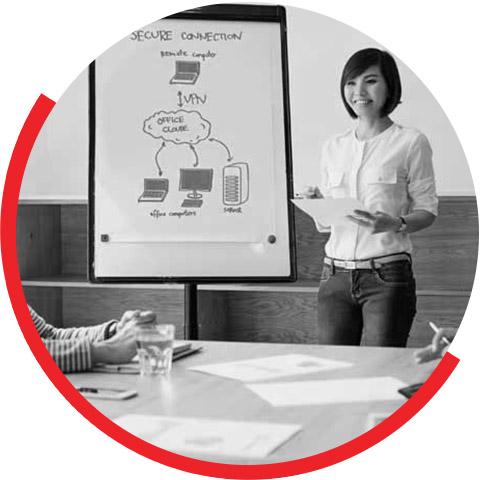With ERP, the definition of 'Going Green' includes improved efficiency, reduced operating costs, improved productivity, reduced environmental stress and improved customer service. In addition, if businesses have the right ERP system, it can help businesses to play a role in becoming more environmentally responsible. This post contains several features of ERP that can be used to contribute to the green initiative.
ERP to turn your organization green.
As more and more businesses are looking for ways to go green, most of them do not realize that having the right ERP system can help them play a role in becoming more environmentally responsible. With ERP, the definition of ‘Going Green’ also includes improved efficiency, reduced operating costs, improved productivity, reduced environmental stress and improved customer service. This article contains several features of ERP that can be used to contribute to the green initiative.
A major change towards going green is reducing the usage of paper and the need for physical filing while boosting the productivity and improving customer service. Oracle Receivables can send invoices via email to customers. With this, invoice copies are no longer required as the pdf copy of the same can be viewed and resent to the customers, as and when required. This will save paper, envelopes, postage and handling charge. Also, it leads to instantaneous delivery to the customers, resulting in faster payments.
The same can be applied to dunning letters (reminders) and customer statements. The Oracle Receivables module can automatically generate periodic statements and dunning letters for customers and send them to the email ids setup for the customer contact. Oracle Receivables can also change the content of their dunning letter automatically based on the number of days past due. This expedites the payment process by reducing the number of telephone calls made to the customer. Also the time, effort, energy and costs involved in collections is reduced.
Using Oracle XML Gateway, Oracle Shipping Execution can send shipment notifications to customers. Oracle Shipping execution uses XML transactions in shipping processes like Departure Ship Notice Outbound (DSNO) and CMS (Carrier Manifesting Systems). DSNO is a departure notice containing information such as ship to address, customer purchase order, requested ship date etc. that can be sent via email to a specified recipient. CMS takes delivery specific data from Shipping Execution and calculates the total weight, freight costs and produces required shipping labels and documents for shipment.
Earlier, purchase orders were sent to the suppliers by taking a printout and then posting to the supplier’s address. This not only led to delay in getting acknowledgement from the supplier but also added to the costs and effort involved in doing so. ERP provides users with the option to send a soft copy of the Purchase Orders to the supplier’s email id. The supplier can get the details of the PO as soon as the PO document is generated in ERP system.
Once the supplier sends the goods along with the invoice, users needed to enter the invoice details in their system. With ERP, users can scan the supplier invoice document which is in a pre-specified format which then automatically generates an invoice in the system accordingly.
In a manufacturing organization, where the item details are generally captured along with a pictorial representation in a document, ERP can help in reducing the paperwork and loss of critical item related data. ERP provides users with fields where they can capture item or order specific details and if required, upload a soft copy of the pictorial representation of the item. This information can be generated on demand in the form of predesigned item specification documents.
ERP can send notifications for approvals to the concerned employees via mail or via mobile applications. Hence any approval is just a click away and will always follow a pre-specified approval hierarchy leading to better control and transparency.
Raising an expense report has never been faster, simpler and more efficient when the functionality was offered by ERP. In ERP, users can fill their expense reports online, scan the receipts and other documents, and send it for approval to the concerned approvers automatically. Nowadays, even service providers and e-commerce websites have started giving soft copies of the receipts. With ERP, all you need to do is attach the soft copy in your expense report and send for approval. Approvers can refer to the soft copies and approve, reject or ask for more information from the employee. The employee will get a notification on the status of the expense report and can take action as and when required without any manual intervention.
In the past, attendance of employees was tracked using the time card and the punching machine. A lot has changed since then. With ERP, employees can enter their timesheets and send to managers for approval. In these time sheets, employees can provide information about the number of hours worked, concerned project or department, type of work etc. Managers can get notifications for the time sheets submitted by employees and can take action accordingly. Providing the right number of hours, project name and project phase can help the organization to allocate the employee costs to a project. This helps in generating better MIS.
BI tools provide a better visibility of the supply chain. With this, the business will be able to track down the bottlenecks and the error causing steps in the supply chain. BI for ERP also provides complete visibility across the value chain to better manage the supply and demand fluctuations. This in turn leads to reduction in losses in terms of material, scrap, time, effort and eventually, costs.
Using telecommuting and remote access enable users to work on the ERP system from home. Users can access the system, approve the requests and perform transactions from home or any remote location. Also, ERP mobile applications enable users to approve transactions, view BI reports etc. on their mobile phones. This saves on the transportation costs, fuel electricity etc.
Having ERP system helps in reducing the use of spreadsheets. Midsize companies work with thousands of spreadsheets to consolidate transactions, balances across entities resulting in a process flow that is time consuming, prone to error and requires more resources. Instead an ERP system can help in making standard periodic reports available as part of the system for use on demand. Researches indicate that a comprehensive integrated ERP system can reduce spreadsheet count by more than 75%.
During the month end, ERP systems help in generating predesigned reports required for month end reconciliation and reporting on demand. Analytics and BI needs of the organizations are also met comprehensively with ERP system without the need to print physical reports or try to juggle multiple reports.
Technology has always played a crucial role in improving productivity, minimizing operation costs, revamping customer service, and a substantial competitive advantage. Businesses which desire to grow need to grasp and take full advantage that technology can offer and simultaneously conserve the environment and its natural resources.
Author Bio:
Jibin, an assiduous Functional Consultant at Sonata Software, works for its Oracle Apps delivery team. He has been working with Sonata for the past 4 years. His hardworking and problem solving skills have made him travel to client locations and provide ERP solutions to clients spread across the world. His on-site exposure to the businesses spread across the world has helped him in excelling in the end user management skill. His qualifications entail a bachelor's degree in Electronics and Communications Engineering and a Master's degree in Business Administration.



